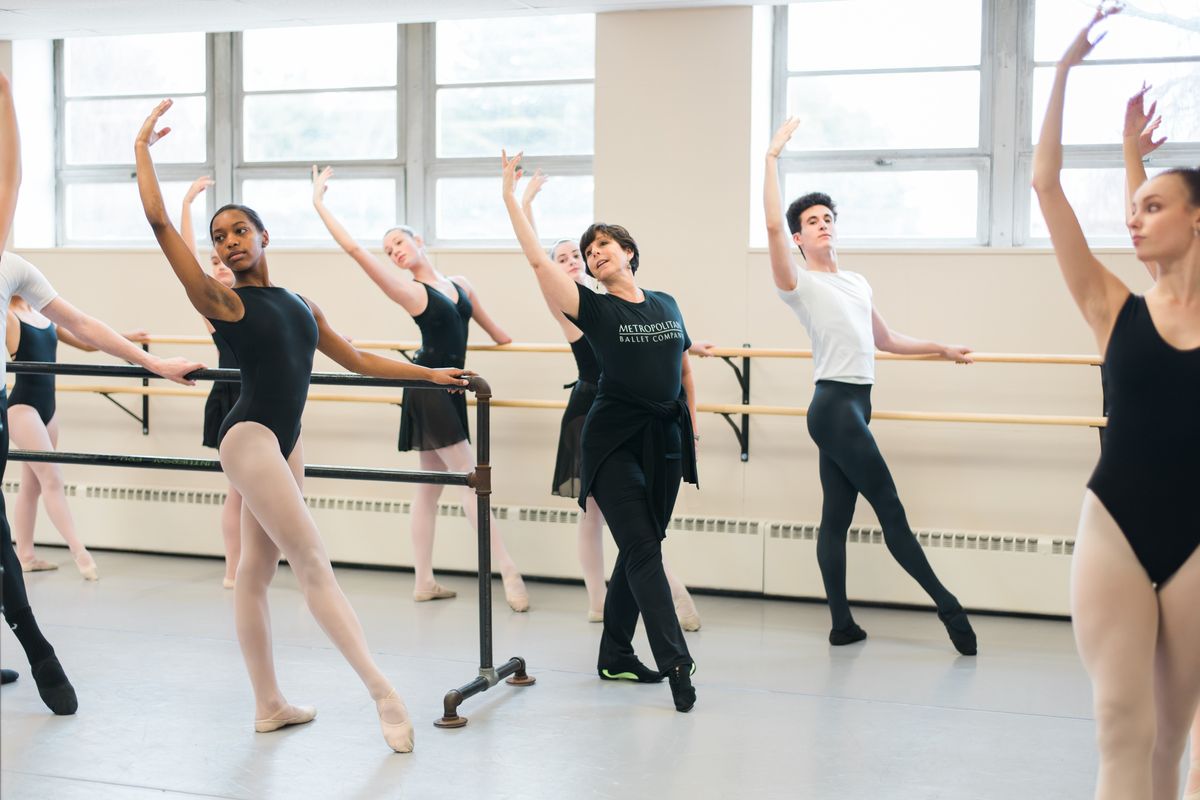
At Metropolitan Ballet Academy in Jenkintown, Pennsylvania, young dancers will pause mid-class to say the combination out loud. Director Lisa Collins Vidnovic encourages them to sing each phrase, at the correct speed and rhythm, to help remember the steps. “They do it together as a group, even if just one person is struggling,” she says. “I find they can’t retain and execute choreography if they’re not able to verbalize it.”
Some students have trouble picking up choreography—and remembering it, too. Teachers might have to repeat the same material again and again, stuck on sequence instead of being able to move forward, coaching technique and artistic details. New challenges arise when dancers forget corrections and don’t apply the notes they get every day. What are the best strategies to avoid these potentially frustrating issues and nurture this essential part of your dancers’ training? DT consulted three teachers about their approach and tips to make the information stick.
Build Associations
Teachers can use word cues to help students anticipate an upcoming step or phrase. “If we do something similar to how an animal moves, then I’ll shout, ‘Do the gorilla,'” says William Jardell, teacher at MNR Dance Factory in Los Angeles. “Dancers hear the word and immediately associate it with a movement, so they don’t have to think about what comes next.”
Music can also help retention, especially when it matches the dynamic of the movement. “If the music is weak and you’re trying to get students to strike in a frappé combination, for example, the disconnect does not help the students retain anything,” says Victoria Schneider, resident ballet faculty at the Harid Conservatory in Florida. “Teachers have to put steps and music together so it assists learning.” She suggests working with a live accompanist, if possible, so dancers can relate to the dynamics of movement and artistic qualities coming from the musician.
Use Visuals
Jardell videos all routines and gives dancers access to the recordings, knowing that some pick up choreography faster than others. “Kids can get embarrassed or shy when they don’t understand something, and they won’t ask questions,” he explains. “When they have this extra resource and can go over it in the privacy of their own homes, it helps.” Schneider also encourages students to watch videos so they can stop, go back and dissect details of the material at their own pace.
For young dancers who can’t seem to remember corrections, make sure they’re watching themselves in the mirror. “If they’re looking at you, they’re waiting for you to do the thinking for them,” says Vidnovic. “They need to be able to look in the mirror, see what they’re doing and then fix it if necessary.” She recommends giving them a simple combination en face with the arms in a preparatory position: two jumps in first, two jumps in second, four changements, two échappés and four counts to stretch the knees. “Can they do the whole thing without looking at you? Until they turn that corner, they can’t self-correct,” she says.
Structure Class Strategically
To retain a correction, students need ample time to practice it. “You can’t move too quickly,” says Schneider. “Slow down the process so they get the information physically and not just in their minds.” Schneider structures her class so that dancers can work on corrections several times and in different contexts. She also encourages students to keep notebooks, write down their corrections and visualize what they need to do differently.
“Class is also where you can assess how fast dancers will pick up choreography,” she says. “But combinations have to make sense, so that students understand how the movements connect. They shouldn’t be tricky for the sake of being tricky.” If class is taught in an illogical fashion, Schneider warns, dancers fight their natural coordination, which can make learning choreography much more difficult.
Another tool is to present the choreography with as few references to “right” and “left” as possible. Instead, Vidnovic tells students to “travel in here” or “travel out there.” She emphasizes directions such as upstage and downstage. “It helps the dancer to think more spatially, instead of which foot is in front,” she says. For older dancers, Vidnovic tries to give all the material at one time so they immediately know the beginning, middle and end. “Rehearsing as you go is not as productive,” she says. “They need to know where everything fits in.”
If dancers still struggle to remember the choreography or specific corrections, try offering a private lesson. “When they have that one-on-one training, they really engage and pay better attention,” says Jardell. “But it’s also important, especially in group situations like team competition, to make sure they’re all working together. Ask students to help each other outside of class and encourage that team element. They should be inclusive, even when one dancer doesn’t get the choreography as fast as other kids.”




